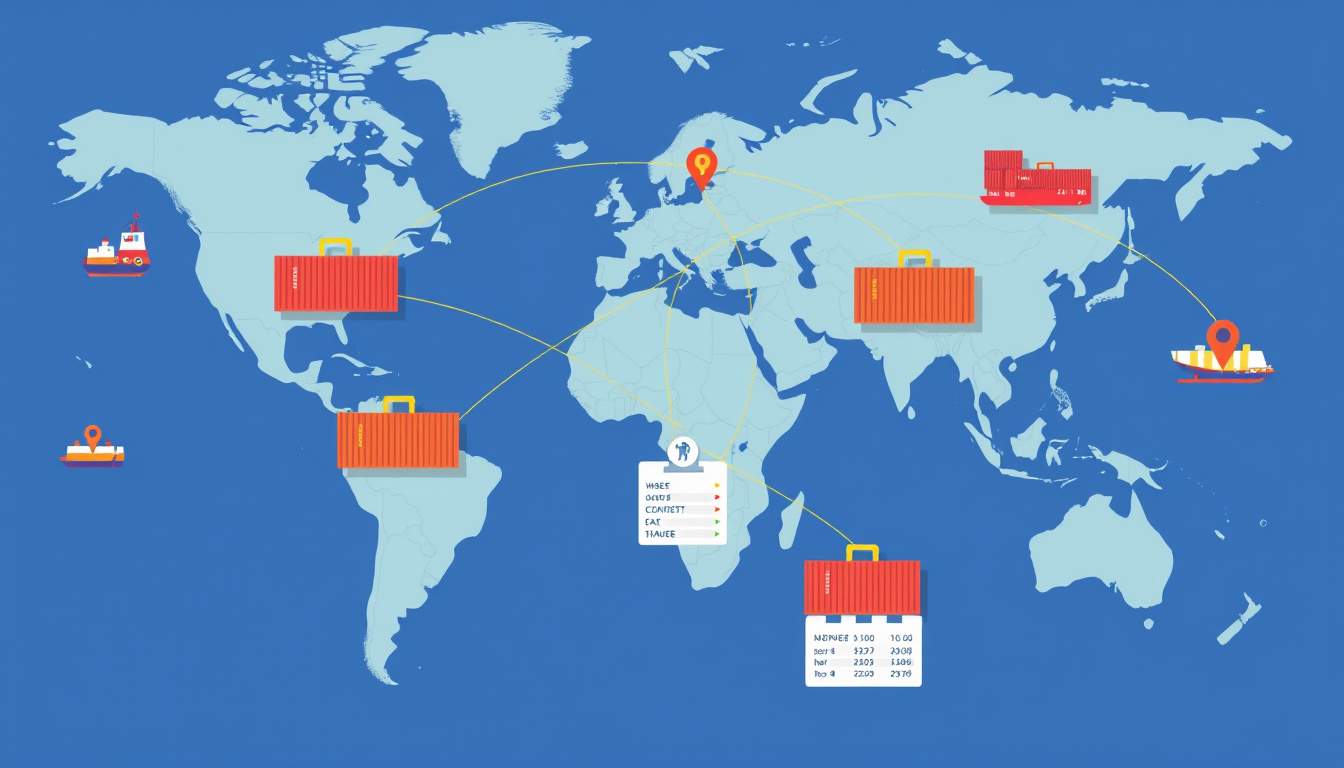In the complex world of international trade, Harmonized System (HS) codes serve as the universal language that eases the classification of goods crossing borders. For importers and exporters, understanding how to correctly search and apply HS codes is essential to ensure compliance with customs regulations, accurate assessment of duties and taxes, and smooth logistics operations. This comprehensive guide explores the nuances of HS code search, its importance, and practical tips to leverage available tools effectively.
What is an HS Code?
The Harmonized System (HS) is an internationally standardized numerical method of classifying traded products developed and maintained by the World Customs Organization (WCO). HS codes—also known as tariff codes or customs codes—are used by over 200 countries worldwide to identify goods during import and export.
An HS code typically comprises 6 digits:
- The first two digits identify the chapter,
- The next two digits specify the heading,
- The final two digits designate the subheading.
Some countries add further digits for more detailed classification. Accurate HS coding is critical to determine customs duties, comply with trade agreements, and compute taxes correctly.
Why is HS Code Search Important?
Using the correct HS code benefits importers and exporters by:
- Ensuring Compliance: Customs authorities rely on HS codes to enforce trade policies, tariffs, and product regulations.
- Avoiding Delays: Incorrect or ambiguous codes can result in shipment delays, fines, or even confiscation.
- Calculating Duties and Taxes: HS codes determine tariff rates and import taxes, affecting landed costs.
- Streamlining Documentation: Accurate classifications simplify customs declarations and paperwork.
Given these stakes, efficient HS code search tools are invaluable for businesses navigating international markets.
How to Perform an HS Code Search
There are multiple approaches to finding the right HS code, depending on your familiarity with product classifications and available information.
1. Search by Product Description
This method involves entering precise keywords that describe your product into an HS code search engine. For example, typing "tablet computers" or "ceramic mugs" will retrieve codes most relevant to those items.
2. Search by HS Code
If you already know or suspect an HS code, entering it directly can help you verify tariff details and classification specifics.
3. Search by Additional Identifiers
Some platforms support searches using identifiers such as:
- CAS Number: Chemical Abstracts Service number for chemical substances.
- CUS Number: Custom identifiers used in specific regulatory contexts.
4. Image-Based Search
Advanced search engines offer the ability to upload an image of your product to identify the most likely HS code classification.

Useful HS Code Search Tools and Resources
Several dedicated platforms exist to assist with HS code searching. Here are some prominent ones and their key features:
FindHS.Codes
- Supports text, HS code, CAS number, and image-based searches.
- Access to customs duty rates for major markets like the USA and the European Union.
- Updated tariff correlation tables by country.
- Provides tariff classification services for expert assistance.
- Mobile apps for on-the-go access.
GlobalPost HS Classification Tool
- Free lookup tool tailored for international shipments.
- Offers guidance on duties, taxes, and customs clearance.
- Integrated within broader international shipping services.
- Helps e-commerce businesses reduce delays and unexpected charges.
European Customs Tariff (TARIC) Database
- Comprehensive resource for European external trade statistics.
- Multilingual support (English, German, French).
- Organized by goods sections and chapters reflecting the HS nomenclature.
- Includes detailed descriptions, customs duties, and export declarations.
Best Practices for Accurate HS Code Search
- Use Specific Descriptions: Include material composition, intended use, and product features.
- Refer to Official Classification Guides: National customs websites often provide guidance notes.
- Validate with Local Customs Authorities: HS codes can vary by country’s additional digits or local adaptations.
- Consider Professional Classification Services: When in doubt, expert services or tariff classification companies help mitigate risks.
- Leverage Instant Classification Tools: Services like Classifast.com provide instant classification of any text input according to international standards such as UNSPSC, NAICS, ISIC, ETIM, and HS, enhancing accuracy and speed.
Understanding HS Code Structure and Classifications
The HS system divides goods into 21 sections and further into chapters. For example:
- Section 1: Live animals and animal products
- Section 2: Vegetable products
- Section 6: Products of the chemical or allied industries
- Section 16: Machinery and mechanical appliances
- Section 17: Vehicles, aircraft, vessels
Each chapter narrows down to more specific product groups, aiding precise classification.
Tips for Importers and Exporters Using HS Codes
- Stay Updated: Tariff schedules change regularly. Use tools with the latest 2025 or current updates.
- Check Country-Specific Additions: Countries may extend HS codes to 8-10 digits for national requirements.
- Avoid Misclassification: Misuse leads to penalties or shipment rejection.
- Use HS Codes in All Shipping Documents: Including invoices, packing lists, and customs declarations.
- Understand Duty Payment Terms: Whether Delivered Duty Paid (DDP) or Delivered Duties Unpaid (DDU) depends on agreements and HS codes.
Conclusion
Mastering HS code search is foundational to success in international trade. By using accurate search methods, reliable tools, and understanding the HS classification system, importers and exporters can minimize customs risks, optimize tariff payments, and ensure seamless global shipping operations.
For professionals seeking rapid and precise classification help, platforms like Classifast.com offer instant and accurate category searches across major international standards, streamlining the classification process and supporting compliance efforts.
Navigating HS codes may seem complex initially, but with the right knowledge and resources, businesses can unlock new opportunities in the global marketplace confidently.
For practical HS code searches, tariff rate information, and classification support, consider visiting resourceful tools such as FindHS.Codes, the GlobalPost HS Classification Tool, Europe’s TARIC database, and Classifast.com — your instant classifier for international trade standards.
